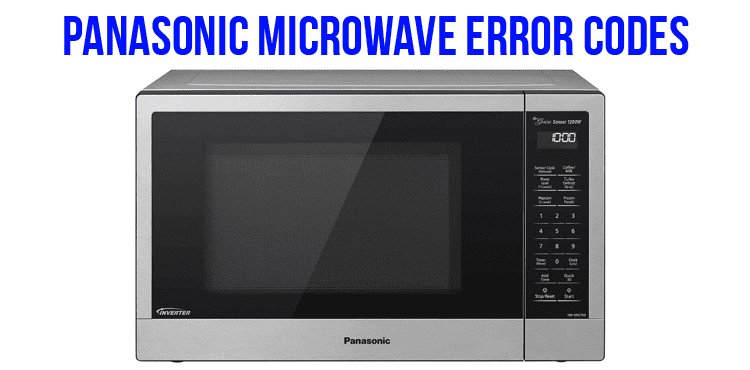
The F2 error code is a signal from your microwave that something might be amiss with the appliance’s sensor. This isn’t merely a hiccup in your microwave’s operation; it’s a hint that the sensor, which helps control cooking or reheating times, might not be functioning correctly. While it might seem like a minor inconvenience or just an annoying beep, understanding why this error appears and what it means for your microwave’s safety is crucial.
Understanding Error Code F2
So, what exactly is this F2 error code? Picture your microwave’s sensor like a little scout that gathers information about the food you’re heating. It detects the steam or heat levels, ensuring your meal cooks perfectly every time. When the microwave flashes F2, it’s telling you that the sensor isn’t doing its job as it should. This can happen due to a variety of reasons, like malfunctioning wiring, a faulty sensor, or even steam and grease causing a buildup inside the unit.
Why does this matter? Well, cooking with an inaccurate sensor can lead to uneven cooking results. Your food might come out too cold, too hot, or worse, partially cooked, which can be a health concern. Imagine biting into a reheated chicken breast that’s warm on the outside but still ice-cold in the center. Not a pleasant experience, right? Also, prolonged sensor issues can strain other components of the microwave, potentially leading to bigger breakdowns down the road.
You might be tempted to ignore the error code and continue using your microwave, especially if it seems to heat your food fine at the moment. However, it’s crucial to remember that error codes are there for a reason. They’re like warning lights on your car dashboard, not to be ignored. Keeping an eye on these alerts can save you from further complications and costs in the future.
Safety Concerns with Error Code F2
You’re probably wondering if it’s safe to use the microwave despite the annoying F2 error code. The short answer is, it’s better to err on the side of caution. Using a microwave with a faulty sensor presents some risks, mainly related to food safety and appliance health. If the sensor isn’t accurately reading the cooking environment, your food might not reach the necessary temperatures to kill bacteria, putting you at risk for foodborne illnesses.
Furthermore, ongoing use of a microwave with an F2 error could exacerbate the problem. Imagine ignoring a leaky faucet; over time, the drip-drip-drip becomes a flood. Similarly, ignoring the F2 error might lead to more significant issues with the microwave’s functionality. This could mean a more costly repair or even having to replace the whole unit, a situation nobody wants to face.
So, should you keep using it? Ideally, you should address the error as soon as you notice it. This involves checking the manual for troubleshooting tips or contacting Panasonic’s customer service for guidance. In some cases, a simple reset or thorough cleaning might do the trick. Otherwise, seeking professional repair services should be your next step to ensure your family’s safety and the longevity of your appliance.
Troubleshooting and Solutions
If you’re dealing with an F2 error code, don’t panic. Let’s walk through some practical steps you can take to troubleshoot the issue. First, consult your microwave’s manual. Manufacturers like Panasonic often include specific advice for addressing common error codes. This might involve resetting the microwave by unplugging it for a few minutes and then plugging it back in. Surprising as it may seem, this can sometimes clear minor electronic glitches.
Next, take a look inside the unit. Is there any visible steam or grease buildup that could be affecting the sensor? Cleaning the microwave thoroughly inside can help. Remember to be gentle with internal components to avoid causing more harm. Use a soft cloth and ensure the microwave is unplugged during this process to prevent any electrical risks.
If the problem persists despite your best efforts, it might be time to call in an expert. A professional can delve deeper into the issue, inspect the wiring and components, and perform any necessary repairs. While this might seem like a hassle, it’s a worthwhile step to ensure your microwave is safe and fully operational. Plus, regular maintenance and inspections can prevent future problems, so you’re not caught off-guard again.
Preventing Future Error Codes
No one likes dealing with errors, especially when you’re just trying to make dinner. So, how can you prevent the F2 error code, or any other pesky issues, from popping up again? It all comes down to regular maintenance and smart usage habits. Think of your microwave as a small car for your kitchen, requiring a little TLC to keep running smoothly.
First, keep your microwave clean. Regularly wipe down the interior and pay special attention to the area around the sensor. This helps prevent grease and grime from building up, which can interfere with the sensor’s function. Also, make sure you’re using microwave-safe containers and covering food when necessary to minimize splatter and steam.
Consider scheduling routine check-ups with a professional technician, especially if your microwave has seen some years. Just like you’d go for an annual health check-up, your appliances benefit from a little professional attention too. A technician can spot potential issues before they escalate, saving you both time and money in the long run.
Lastly, always heed those error codes. They’re not just random blips; they’re your microwave’s way of asking for help. By promptly addressing any issues, you ensure that your microwave remains a reliable and safe kitchen companion for many meals to come.